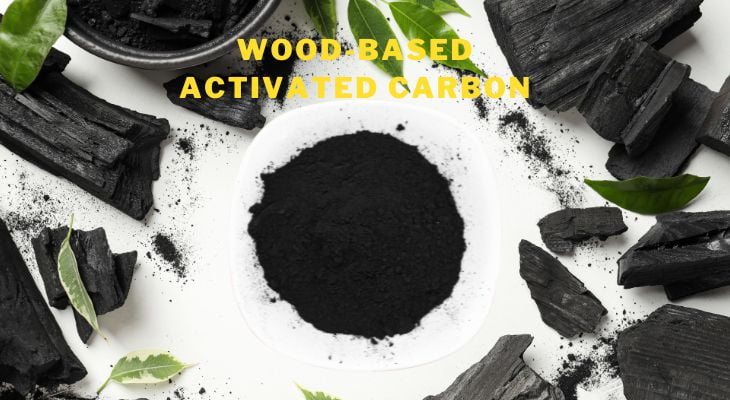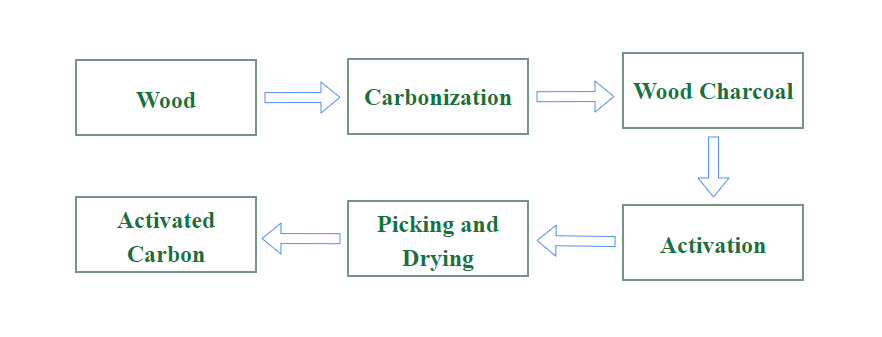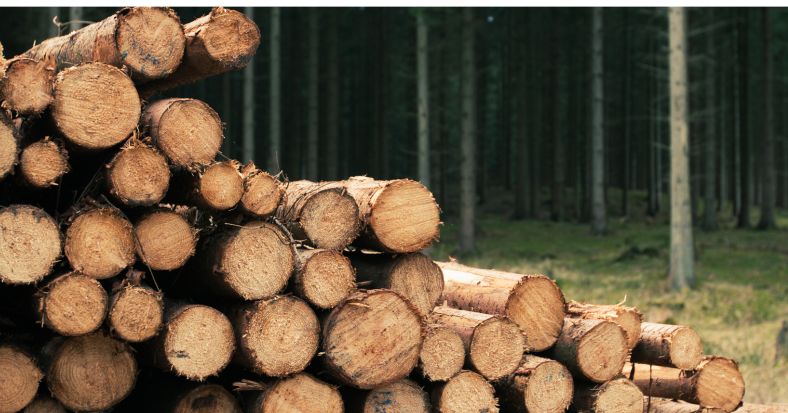
In today’s pursuit of sustainable development and environmental consciousness, wood based activated carbon has become the green choice for an increasing number of individuals.
This article delves into why wood activated carbon is gaining popularity across various industries.
Throughout this article, you will discover the advantages of activated carbon and its applications in different sectors.
What is Wood Activated Carbon?
The primary raw material for wood-based activated carbon is wood, typically in powder or granule form.
This type of carbon is produced through steam or phosphoric acid activation, possessing advantages such as high porosity, large molecular adsorption capacity, high permeability, and purity. It is mainly used to absorb impurities in liquids.
Similar to coal and coconut charcoal, steam activation and phosphoric acid activation are the two main production processes for wood-based activated carbon.
Wood-based carbon exhibits high reactivity, conductivity, and surface area.
Additionally, carbonized wood or charcoal derived from plants is a renewable and genuinely clean form of carbon.
How to Make Activated Carbon from Wood?
Wood activated carbon is a type of activated carbon. Broadly speaking, activated carbon can be produced in many ways.
The raw material for wood-based activated carbon is typically various types of wood. Its ,manufacturing mainly involves the following steps:

What are the Advantages of Wood Based Activated Carbon?
- High Porosity
- Large Adsorption Capacity
- Permeability
- Purity
Do you plan to purchase activated carbon?
The Applications of Wood-based Carbon
Drinking Water Purification
Wood-based charcoal is used as a water purification agent, removing organic compounds, odors, and pigments to improve the quality of drinking water.
Surface and Wastewater Treatment
In applications for surface and wastewater treatment, wood-based charcoal plays a crucial role in adsorbing particles, organic compounds, pigments, dyes, fats, and heavy metals in water.
Decolorization in Food and Beverages
In the food and beverage industry, wood-based activated carbon serves as an excellent decolorizing and deodorizing agent, primarily used to remove color and undesirable odors.
Wood-based activated carbon, in powder form, is particularly effective in eliminating impurities that can cause adverse taste, color changes, or even unpleasant odors.
Pharmaceutical Industry
Wood-based activated carbon is used as a detoxifying agent in medical applications, adsorbing toxins and drug residues.
In the pharmaceutical industry, it is also employed in the preparation of medicines and drugs.
Purification and Decolorization of Edible Oils
Wood-based activated carbon plays a crucial role in the purification and decolorization of edible oils, effectively removing impurities, discolored substances, and odors that can lead to turbidity.
Agricultural Field
As a soil conditioner, wood-based activated carbon can improve soil structure and increase organic matter in the soil.

So, why does wood-based activated carbon exhibit such excellent purification effects in various fields?
Let’s continue reading the article.
Conclusion
Wood-based activated carbon, with its unique manufacturing processes and outstanding environmental performance, has become a model for sustainable development.
We believe that through reading this article, you have gained a deeper understanding of wood-based activated carbon.
Do you plan to purchase activated carbon?
FAQ
Is Wood Charcoal Activated Carbon?

Obviously the answer is no.Charcoal and activated carbon are related but not entirely identical materials.
They differ in processing methods, microscopic structure, surface area, hardness, production costs, raw material consumption, and shape.
Charcoal is the carbonization product of wood and is commonly used for heating or cooking, often associated with barbecue. Charcoal is also a carbon-rich solid extracted in a similar manner from biomass.
On the other hand, activated carbon is also a carbon-rich solid obtained through pyrolysis from biomass or other carbon-containing substances, such as coal or tar. Activated carbon is typically used for filtration and purification purposes.
Since “charcoal” is an established term, it is often used to describe other carbon products, even those that are not specifically intended for heating or cooking. For example, “activated charcoal” is typically used interchangeably with “activated carbon.”
Which Wood is Best for Activated Charcoal?

In general, hardwood or specific types of wood are the optimal choices for producing high-quality activated carbon.
Common hardwoods include oak, maple, hickory, birch, and others. When selecting wood, it is essential to consider the specific requirements of the intended application of the produced activated carbon, such as water purification or air filtration, along with cost considerations.
Do you plan to purchase activated carbon?